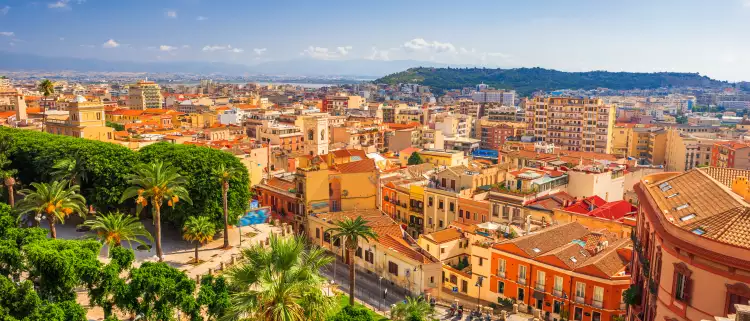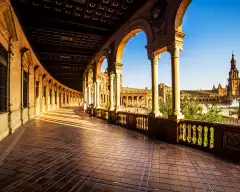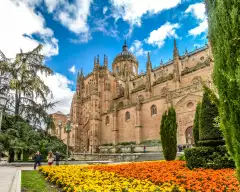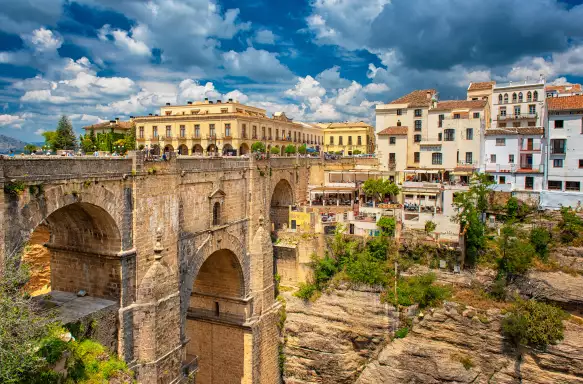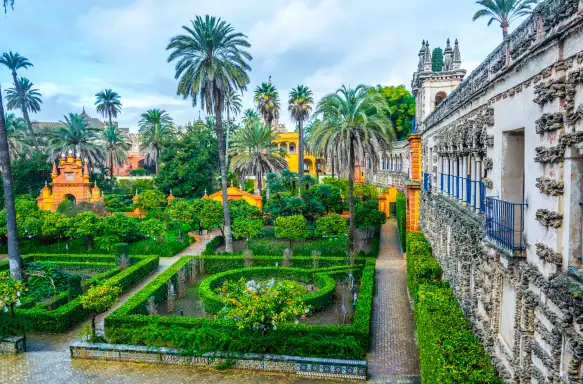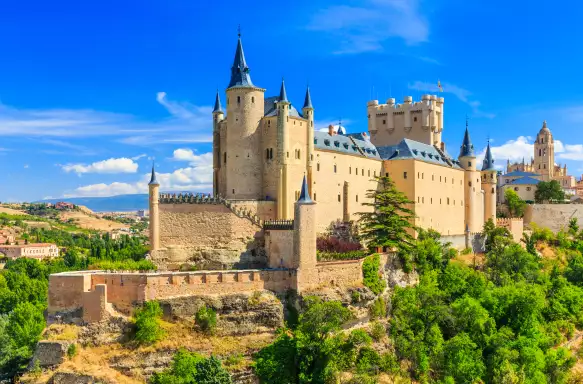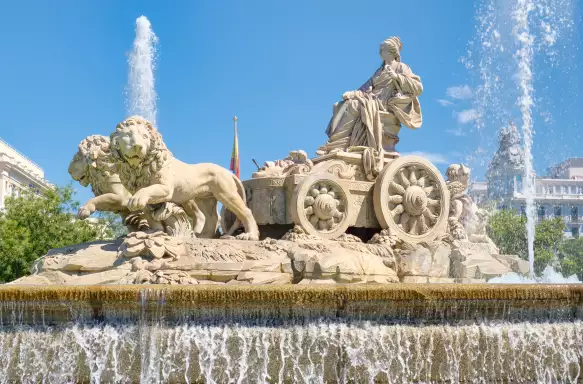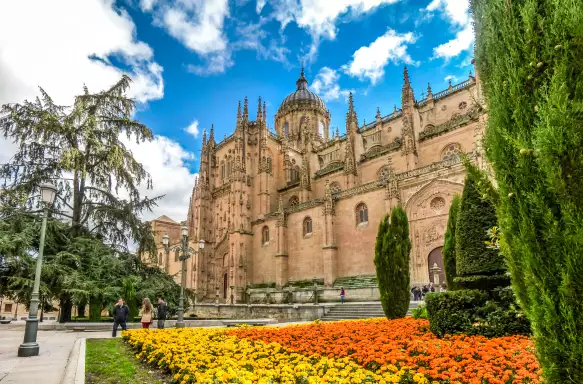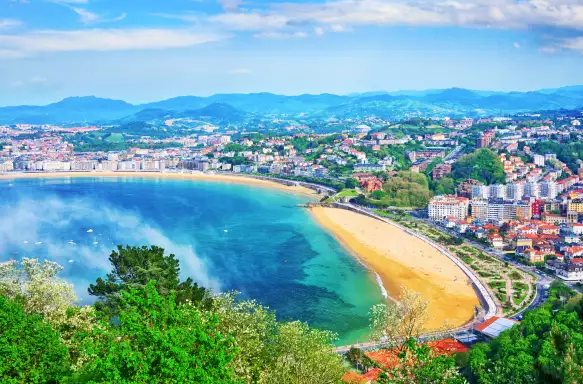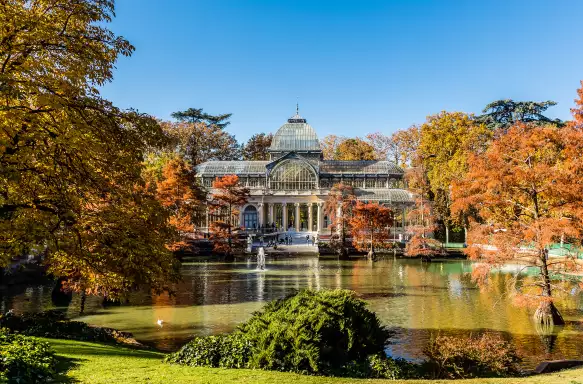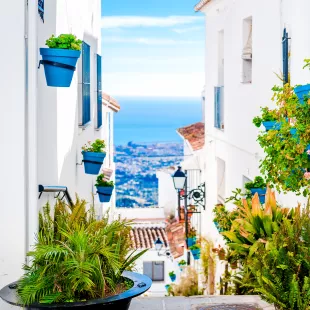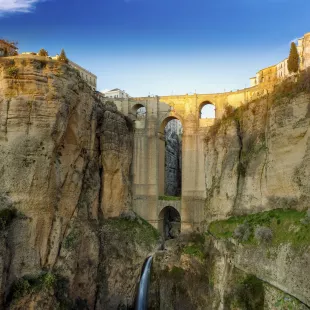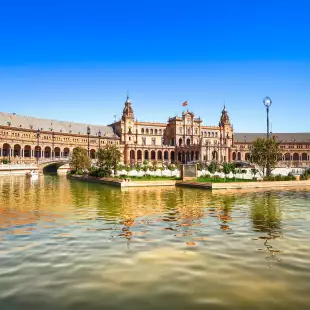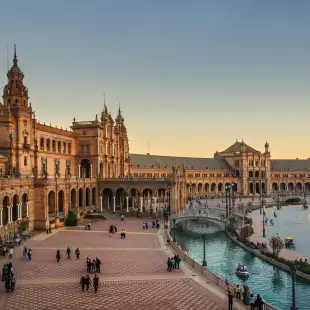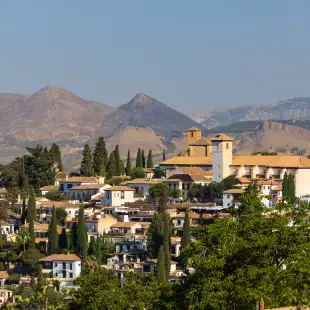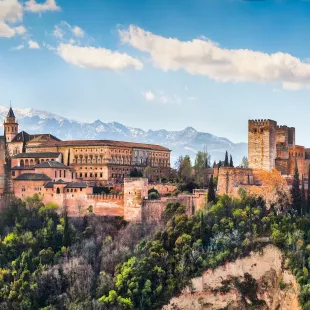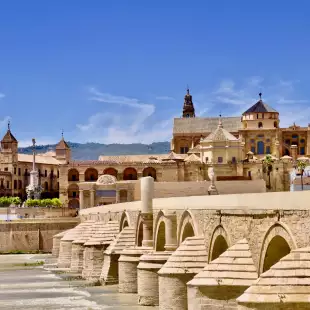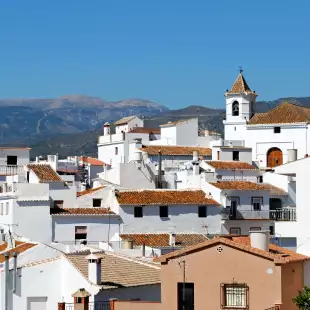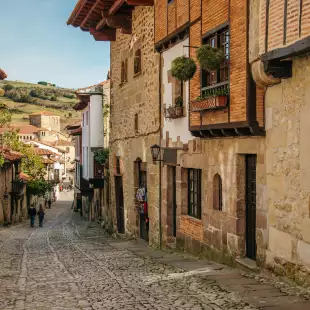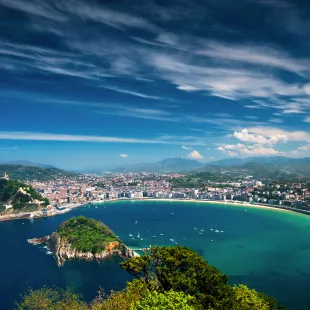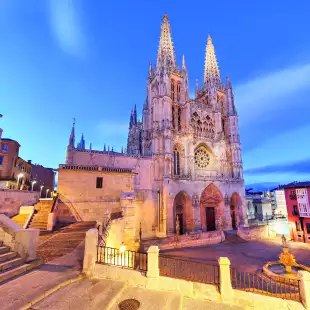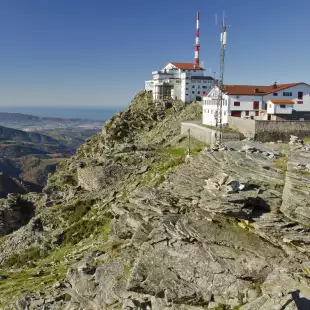Visit one of the largest countries in Europe and experience a blended world of rich history, culture and fine cuisine. Viva España!
A holiday to Spain offers something for every kind of traveller. The beauty of Spain lies in the sheer diversity of the country; here you can explore everything from sophisticated cities and architectural gems to pristine beaches and jaw-dropping landscapes. Throw in a fascinating culture, world-class art and the most delicious national cuisine, and it’s clear to see why Spain is such a popular European holiday destination.
From the grandeur of Madrid – Spain’s capital city with a stylish personality all of its own – to the iconic sights of Granada, there’s plenty of history and culture to soak up, whichever region you visit.
Away from the vibrant cities, explore picturesque medieval towns and the enchanting beauty of Spain’s lush green landscape. Wherever you venture, you’re guaranteed a warm welcome from the charming locals who are proud to show off their spectacular country.
What is the best part of Spain for a holiday?
Our Escorted Tours of Spain give you a unique opportunity to experience an authentic taste of this remarkable country. Some of the most popular places to visit include:
- Madrid: With a modern, buzzing feel, set against a backdrop of magnificent classical architecture, the cosmopolitan city of Madrid has so many sights to see. Explore the Royal Palace and Plaza Mayor before dining on delicious tapas.
- La Rioja: As well as sweeping natural beauty, La Rioja is also famous for its world-renowned wine. Join a guided tour around one of the many award-winning vineyards and enjoy a wine tasting at one of the region’s top bodegas.
- Seville: Andalusia is home to flamenco, so head to the golden city of Seville for a mesmerising performance by the artists who live and breathe this artform. Pay a visit to the Royal Alcázar, an awe-inspiring royal palace with huge historical importance.
- Ronda: The mountaintop city of Ronda perches high above a deep gorge plunging hundreds of feet. Connected by a bridge that seems to be carved from the rockface, the dramatic scene looks straight out of a fantasy book.
- Barcelona: Art lovers must make a trip to Barcelona – a city defined by the architectural genius of Antoni Gaudi. Pay a visit to the beautiful Sagrada Familia, Gaudi’s unfinished masterpiece of towering spires and intricate carvings.
What is best month to go to Spain?
Enjoying around 3,000 hours of sunshine every year, Spain is a generally very sunny country, although different regions are characterised by their own climates throughout the year.
Overall, spring is the perfect time to visit Spain, with warm temperatures reaching an average high of 19°C from March to May. Autumn is also a great time to visit, with mild to warm temperatures and minimal rain through September and October.
The height of summer may be ideal for a Spanish beach holiday, but if you plan on exploring the cities you may find the temperatures too hot for sightseeing. Do as the locals do and escape the brutal heat of the cities for coastal regions during August. And, while summer often sees soaring temperatures, winter can feel positively chilly. If you plan on travelling between December and February make sure you pack a warm coat.
Where should I stay when visiting Spain?
Where to stay when visiting Spain depends on your own interests and where exactly you want to visit. Here are some of our top picks:
- If you enjoy vibrant city life, head to one of Spain’s cultural hubs. There’s so much to discover, whether that’s the charismatic and eternally stylish capital, Madrid, Seville – the birthplace of flamenco – or lively Barcelona.
- For a taste of island life, head to the Balearic Islands, just off Spain’s eastern coast. Despite their reputation as party islands, Ibiza, Mallorca, Menorca and Formentera offer plenty of cultural highlights and a laid-back beachy vibe that’s very endearing.
- In the south of the country Moorish influences are seen in the historic architecture and unique cuisines – and nowhere captures this more than the majestic city of Granada. Home to the world-famous Alhambra, which sits in the centre of the city against the dramatic backdrop of the snow-capped Sierra Nevada mountains, it’s quite unforgettable.
What to wear in Spain
Unless you’re travelling in the height of summer, it’s useful to pack plenty of layers to cope with the changeable temperatures. Pair lightweight shirts, dresses, shorts, trousers or skirts with light jackets and cotton shawls through the spring and autumn months.
In Spanish cities people tend to dress well, so avoid overly casual outfits like activewear or very revealing clothes. If you are visiting any religious sites – perhaps a church or mosque – do dress respectfully and make sure shoulders and knees are covered.
Be aware that in some parts of Spain it’s illegal to be bare-chested in the street or to be wearing only a bikini or swimming shorts – even on the seafront promenade.

What is the food like in Spain?
Spain is famous for its bold cuisine and is a dream destination for food lovers. Spanish cuisine is all about making the most of fresh, local and in-season ingredients, to create simple dishes packed with flavour. While each region is proud of its own speciality dishes, there are some meals you really need to try when visiting Spain.
Tapas is such a big part of Spanish life and culture. These small plates of food are designed to be eaten as a snack and shared between friends. Tapas dishes can be everything from garlic prawns to croquets or cured meats and cheese, but they all have one thing in common – it’s about more than the food. Sharing tapas is a hugely social experience – and the Spanish love nothing more than to socialise with friends.
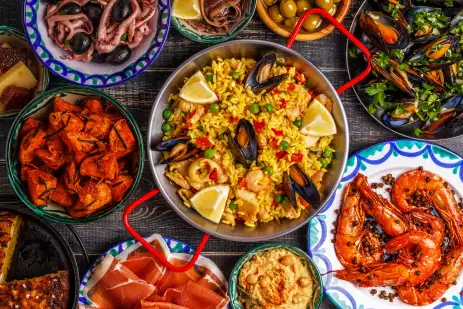
Paella is a famous Spanish dish – and believe us when we say you haven’t tasted proper paella until you try it in Spain. This saffron-flavoured rice dish is cooked in a large paella pan and features a mix of meat or seafood.
Calamari is a popular seafood dish, whether served as tapas or on its own. These battered, deep-fried squid rings can be served simply seasoned and with a squeeze of lemon, or with aioli (a garlic mayonnaise dip).
Tortilla – often referred to as Spanish omelette – is a simple and delicious dish perfect for vegetarian travellers. Made with potatoes, eggs and extra virgin olive oil, it’s hearty and filling, and is found on most menus.
The Spanish love their meat and seafood, but you’ll still find plenty of options as a vegetarian. However, if you’re a vegan and travelling outside of the main cities you may have more limited choices.
Best ways to get around in Spain
Spain has a large rail network and many of the larger cities are connected by either the high-speed (AVE) or long-distance (Large Distancia) service.
In Barcelona, Bilbao and Madrid you’ll find the underground Metro system, which is generally easy to use/navigate and safe for tourists.
While city bus lines can be a little tricky to understand, street-tram services (found in 13 cities across the country) are a little more straightforward.
Taxis are plentiful, but only use official registered or licensed taxis, or reputable transport companies you recognise. Passengers caught using unlicensed taxi services are liable for fines, so book in advance where possible.
If you plan on exploring the Canary or Balearic Islands, you can use the Spanish boat and ferry service from the mainland.
Top Tips For Your Spain Holiday
• The currency in Spain is euros, and there is no tipping culture as such. A service charge is usually included in the bill (particularly for large groups).
• Siestas (a short afternoon nap) are common in Spain, and smaller shops will likely close for a few hours.
• If you have a UK passport, you can travel to Spain as a tourist for up to 90 days in any 180-day period. Ensure you get your passport stamped on entry and exit of the country, as border guards will check this.
• 112 is the phone number for emergencies in Spain. Call this number and you will be connected to the right emergency service through multilingual operators.
• Be wary of pickpockets and bag snatchers, particularly in larger cities at popular tourist spots, on beaches and on public transport.
• Spain uses Type C and Type F plugs. We recommend taking a universal adaptor to prepare you for any eventuality.
